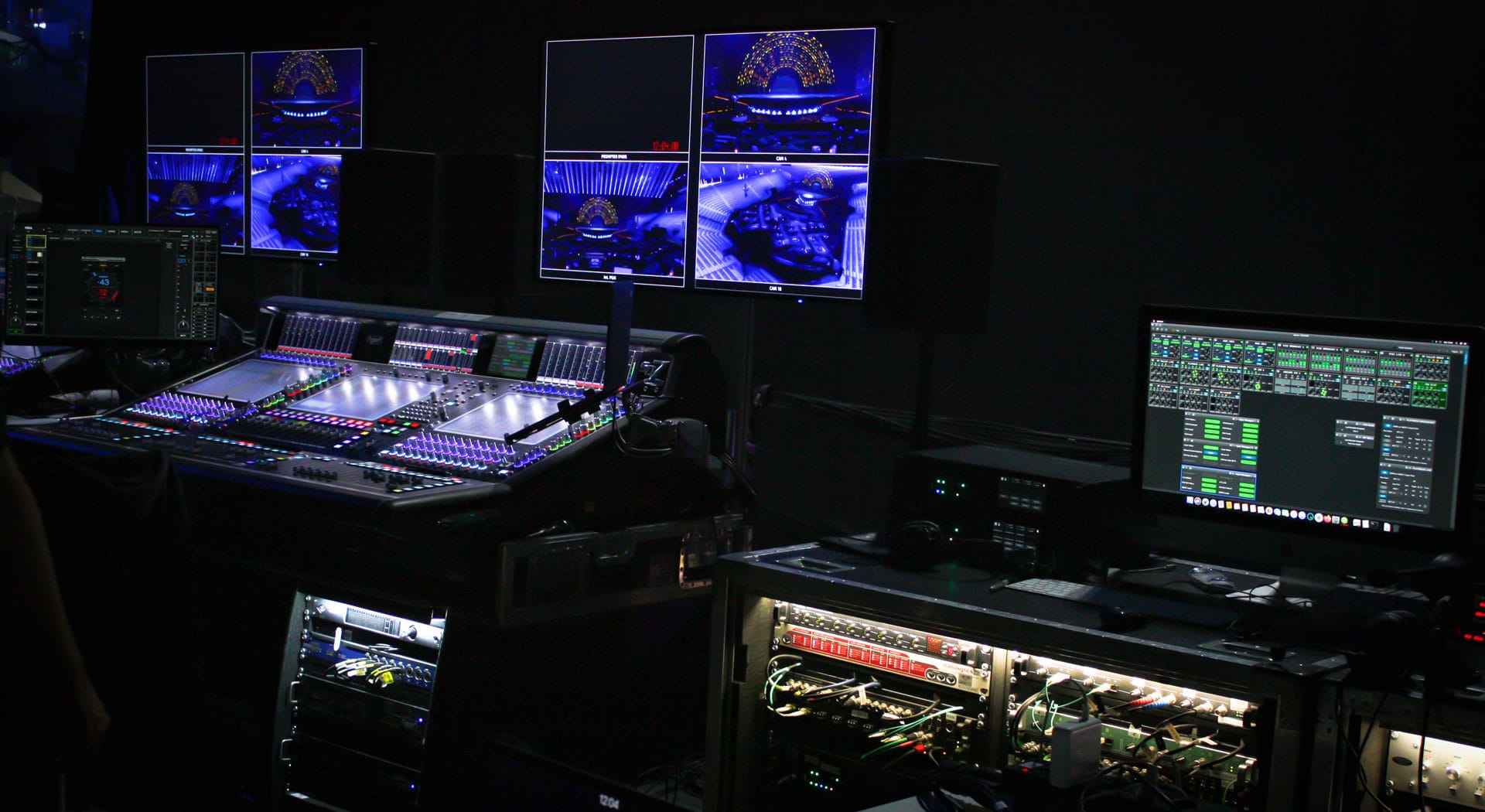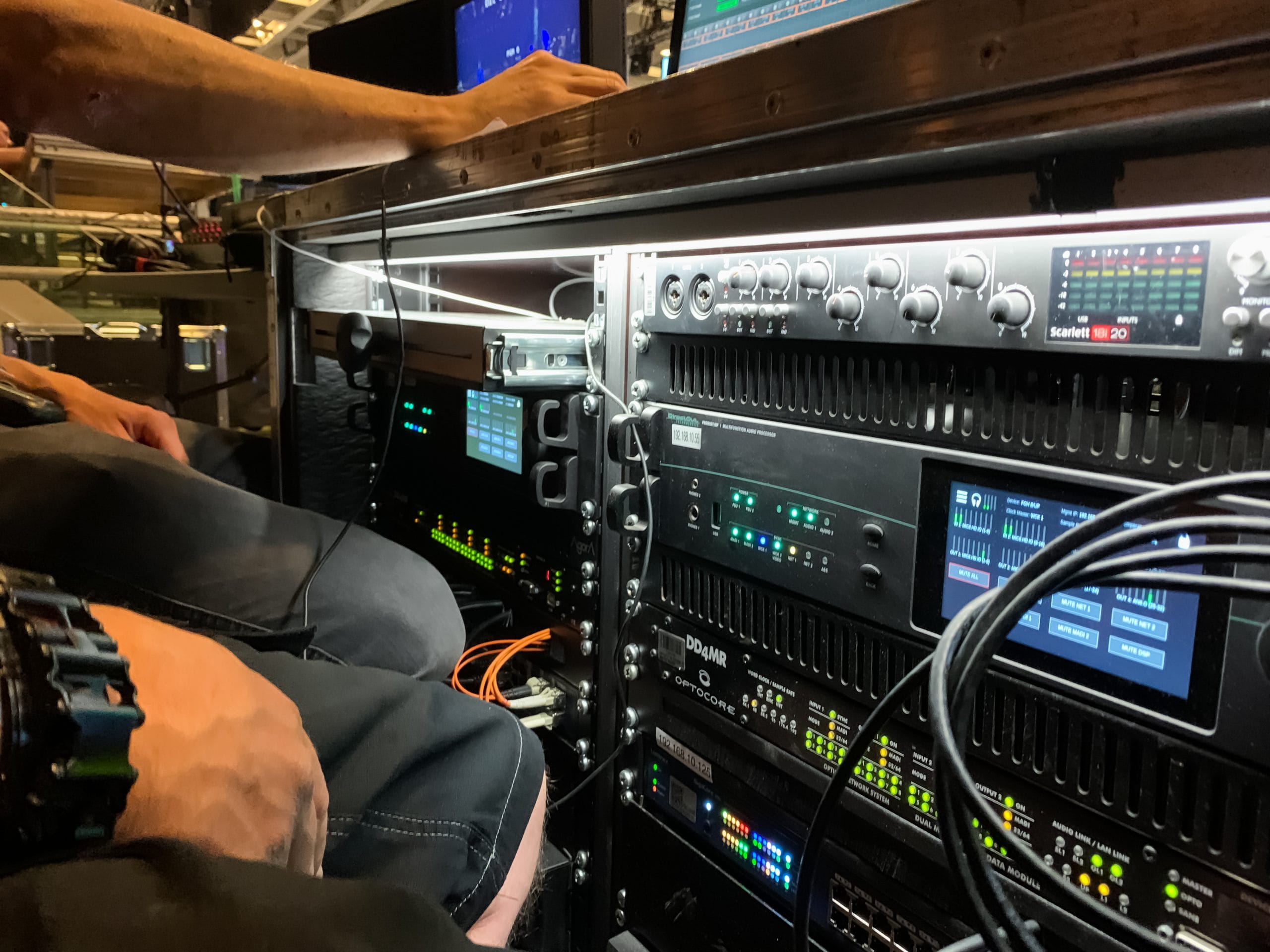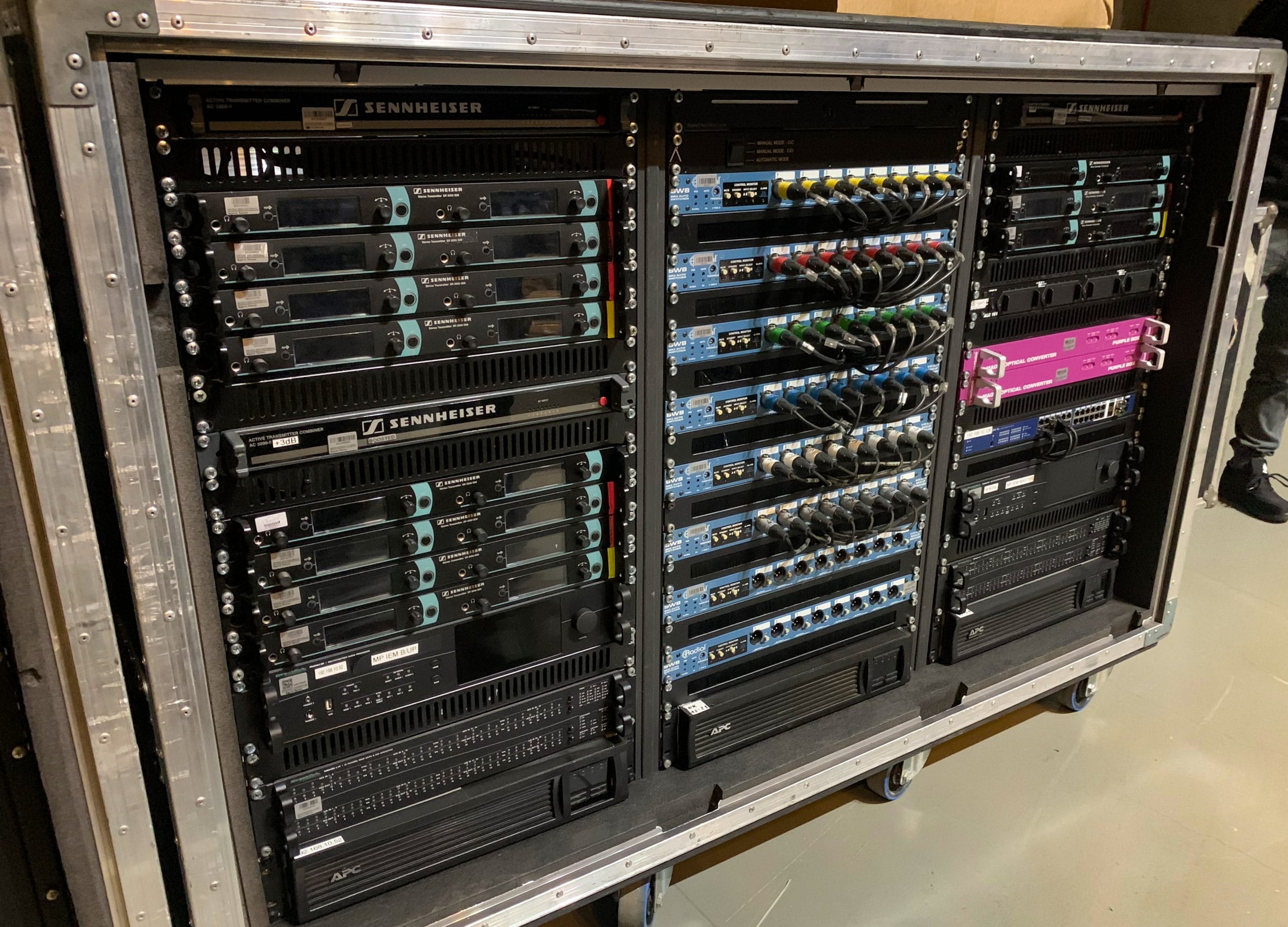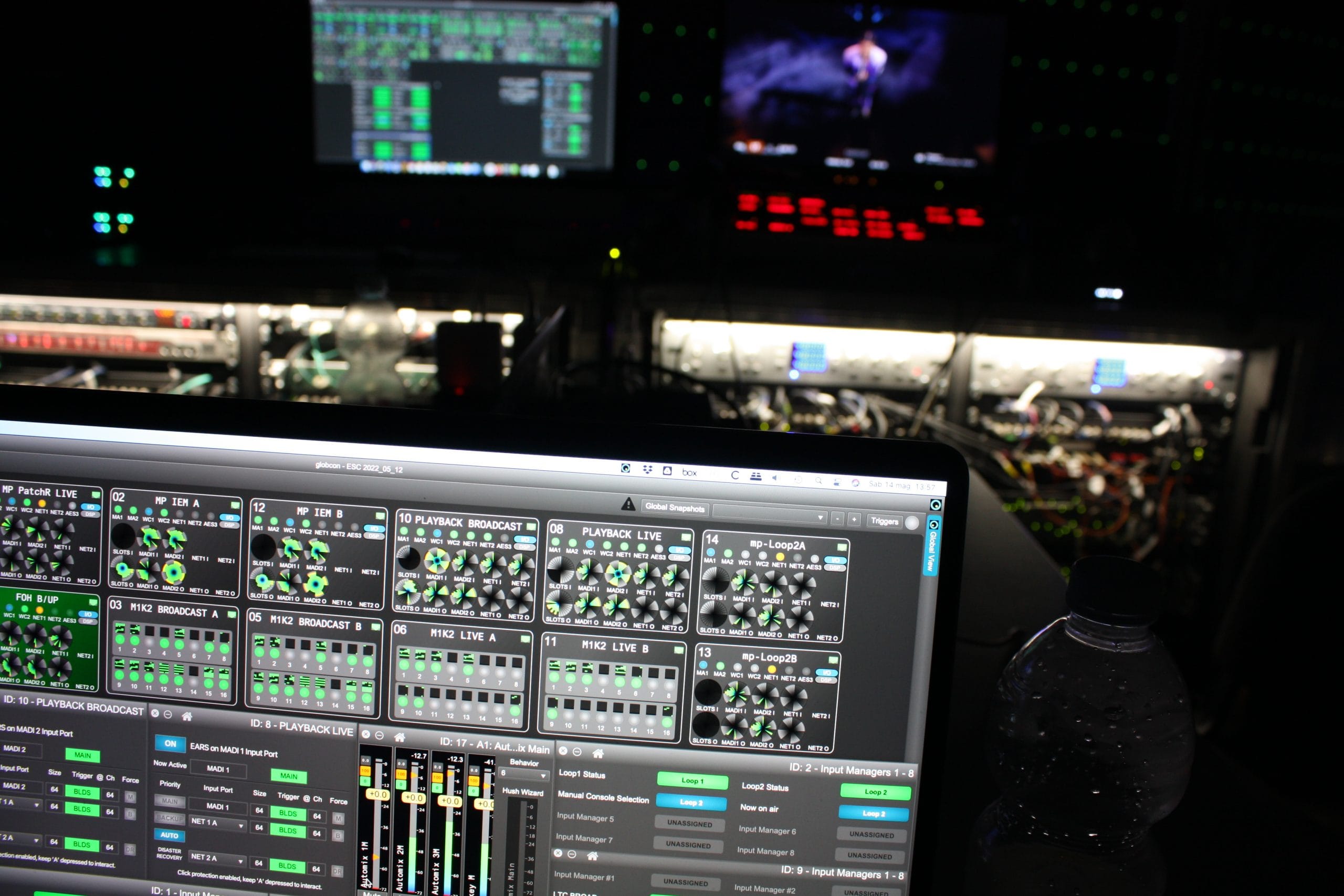Unusually, the technical infrastructure used a single synchronization source to ensure maximum quality in the exchange of 48kHz digital audio, as well as facilitating the use of bi-directional SRC in the event of problems. The sync was derived from the two NEP OB trucks serving the event’s broadcast.
To achieve the exceptional level of system security the project required, the planners relied extensively on audio converters, processors and distribution systems from German professional audio hardware manufacturer DirectOut – in particular, the PRODIGY.MP processor, ANDIAMO AD/DA converter and M.1K2 scalable MADI router.
The ESC2022 used a total of 14 PRODIGY.MP units for its central audio interfacing and distribution, providing ‘glue’ between the different audio formats and manufacturers’ systems in play, seamlessly integrating a huge and diverse audio system for FOH, Monitors, Playback, Patch Room and Broadcast. As an interface between different parts of the system, the PRODIGY.MP worked with its FastSRC™ – bidirectional, low-latency asynchronous sample-rate conversion for MADI and Network I/Os that allows two digital interfaces of a device to work in different clock domains – in bypass mode but ready to intervene within the stipulated single audio sample.
Luca GiaroliThe PRODIGY.MP was the perfect solution because it is able to perform several complex tasks in parallel
Within the ESC2022 playback system, EARS™ (Enhanced Automatic Redundancy Switching) was also employed by the PRODIGY.MP units – enhanced to be yet more secure specifically for this event. EARS™ not only detects whether the audio stream of a playback system is received or not, but whether the playback system (in this case, three Pro Tools DAWs running on MacBook Pro laptops) is in a buffer loop state. In case of signal failure or loop detection, EARS™ switches the entire port or multi-channel stream to the backup after checking its functionality.
In addition to the main and backup Pro Tools sources, the third laptop provided disaster recovery, which was available as a third parallel source in case of a simultaneous failure of both main and backup. To further increase system stability, an Input Manager and Automator were also added to the PRODIGY.MP units. Automator is a completely new feature of the PRODIGY.MP that provides triggers and actions that marked its premiere with a baptism of fire during ESC2022.
Triggers can be internal status changes of the device or external events, such as Open Sound Control (OSC) and MIDI commands. Actions, in turn, can be internal device status changes or external events, such as MIDI commands, OSC, TCP/IP, UDP and GPO. A single trigger or logical combinations of multiple triggers can both prompt actions.
These redundancy measures were prepared, for example, such that should the primary playback system shut down the secondary would intervene, and signals be automatically re-routed to ensure continuity for live and broadcast.
In the event of the primary FOH/Monitor/Broadcast console shutting down, the secondary console would automatically take over and re-route signals to ensure continuity. If the systems intended for automatic recovery from both of these scenarios themselves failed, a further equivalent was in place take over and resolve the problem.
The ESC2022 also made use of globcon remote control software, a manufacturer agnostic GUI, for system management, that DirectOut was the first company to adopt when it was released. globcon offers full control of multiple items of equipment in Mac/PC/Linux-based systems, and features comprehensive snapshot management with selective recall scope-sets. This also supports trigger management.
‘The PRODIGY.MP was the perfect solution because it is able to perform several complex tasks in parallel,’ explains Luca Giaroli, who both designed and monitored the entire signal distribution flow for ESC2022. ‘It was even able to increase the security of lower performing system components due to its redundancy strategy and supporting features. And, thanks to globcon, I had the whole system always under control with all devices interacting whenever needed.






